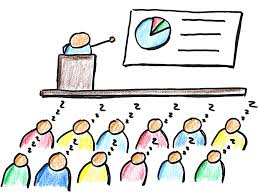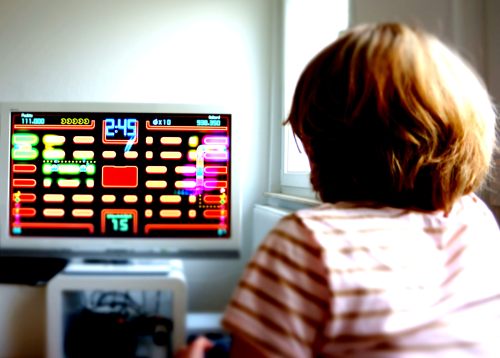Presentation and Content Delivery
A presentation is the way that information is delivered. When planning lessons, one of the most important questions I ask myself is “when do I use lecture style teaching rather than hands on experiences”? According to Jamison (2014) this decision is made by the teacher and is based on the needs of the learners and the objectives being taught. The bigger question is how do we, as teachers, keep our students engaged.
Digital storytelling is a way to keep learners engaged. Frazel (2010) states that digital storytelling blends media (image, video and audio) to enrich and enhance a presentation. This blend of multimedia helps to motivate and engage students.
Below, I have linked an example of digital storytelling. The lesson involves students learning about Native American culture and the Trail of Tears. After students learned about the Trail of Tears, they had to put what they learned into their own words. To create this digital storytelling example, I used a free program called storybird.com. This program allows teachers to set up a classroom account where students can share their creations. Students are able to create virtual books using the many art pieces supplied by the website. Click here for my example!
Digital storytelling also helps struggling readers and writers (Morgan, 2014). Digital storytelling helps learners with sequencing events and punctuation. Digital storytelling also helps students visually express their ideas and practice writing for an audience.
Gaming Technology
Using games in the classroom is another way to get students engaged in their learning. However, it is important to understand that “gaming” in the classroom is different from the games students play for fun at home. Games in the classroom have meaning and connects to student learning. “Gamification” also increases student engagement, collaboration, fun and achievement. Games also help students build interpersonal relationships (Hsu, Chang & Lee, 2013).
According to Jamison (2013), meaningful games have five important elements.
- Meaningful games are story like. They have meaning and a purpose.
- Meaningful games force players to make decisions that will impact their progress in the game.
- Meaningful games let players fail.
- Meaningful games let players use their imagination.
- Meaningful games let players know what they must do to win.
Classroom Connections

I really had fun creating the lessons using digital storytelling. I used the free website story bird.com to help students express their ideas and what they learned about the Trail of Tears and the Cherokee Nation. I really like this website. It is easy to use and teachers can set up a classroom account where students can share their work with each other (very similar to Google Classroom). The website also provided the user with different picture options. By searching the categories, students could find pictures and works of art that best fit their project. I thought this was an interesting feature because some students do not like to do anything related to art and drawing. At just the thought of creating a book with illustrations, some students will shut down because they think they cannot draw. This gives them a way to create a meaningful piece with beautiful illustrations. I definitely want to use this program in my classroom. 🙂
I am in the middle when it comes to using games in the classroom. I see the benefit if they are used correctly in the classroom. However, to be used correctly, there has to be enough time; and time is something that teachers do not have a lot of. Students need time to play games that allow them to follow a story and make important decisions that impact whether they win or lose. According to Big Think (2011) the traditional classroom would have to be redesigned into something more flexible. Teachers can teach the content, then give students opportunities to play these meaningful games during lab time. Unfortunately, it is hard for me to see this happening. Right now, there is not enough time with all of the state standards and district testing.
What are your thoughts on gaming in the classroom? Let me know in the comments below.
References:
Big Think. (2011). Playing Games in the Classroom. Retrieved from https://www.youtube.com/watch?v=bA7KuOyH3PQ.
Frazel, M. (2010). Digital storytelling guide for educators. Eugene, Or: International Society for Technology in Education.
Hsu, S. H., Chang, J., & Lee, C. (2013). Designing attractive gamification features for collaborative storytelling websites. Cyberpsychology, Behavior & Social Networking, 16(6), 428-435. doi:10.1089/cyber.2012.0492
Jamison, J. (2013). EDU625 unit 5. Retrieved from https://www.youtube.com/watch?v=VNiwkozFMk0&feature=youtu.be.
Jamison, J. (2014). EDU 625 unit 4 presentation. Retrieved from https://prezi.com/kusbq5-y_lml/edu625-unit-4-presentation/.
Morgan, H. (2014). Using digital story projects to help students improve reading and writing. Reading Improvement, 51(1), 20-26.

